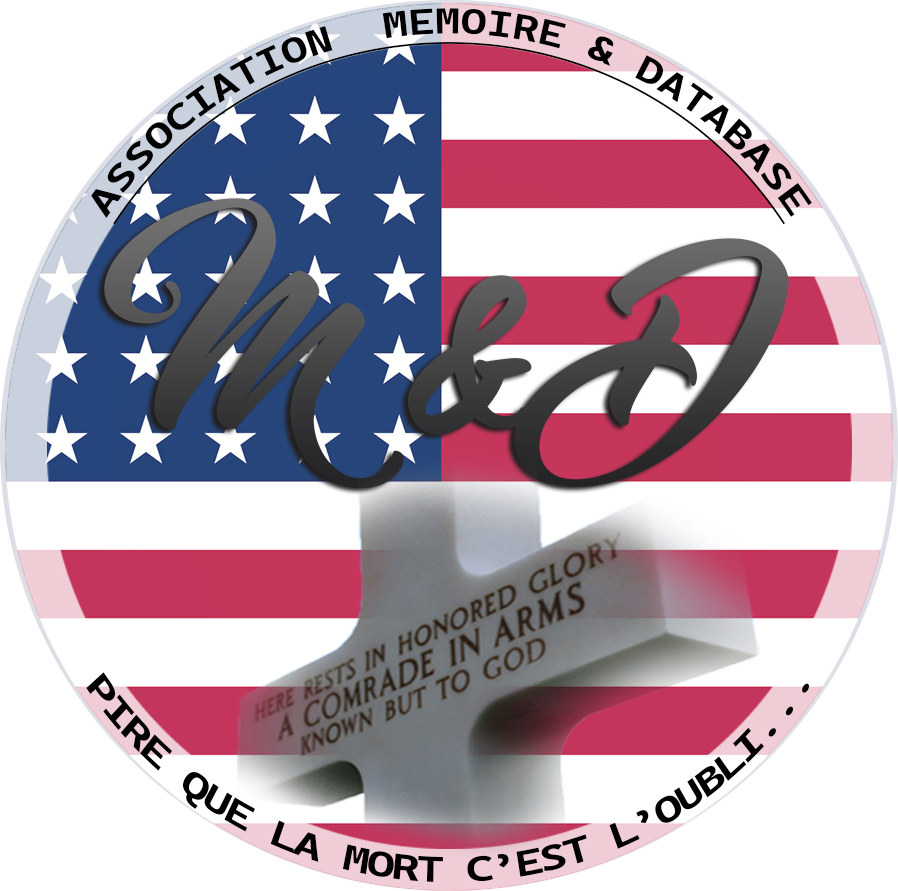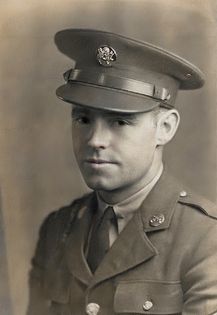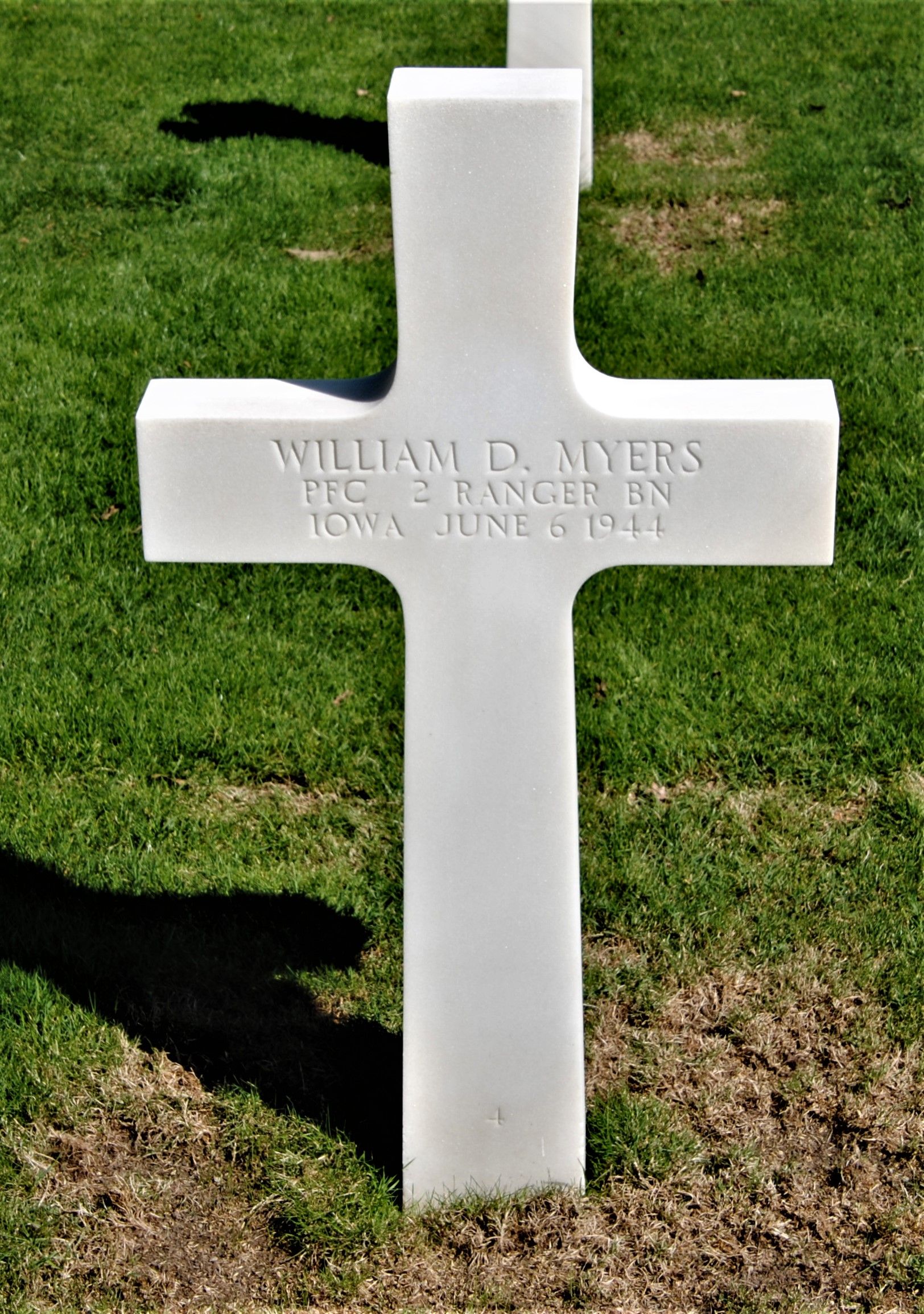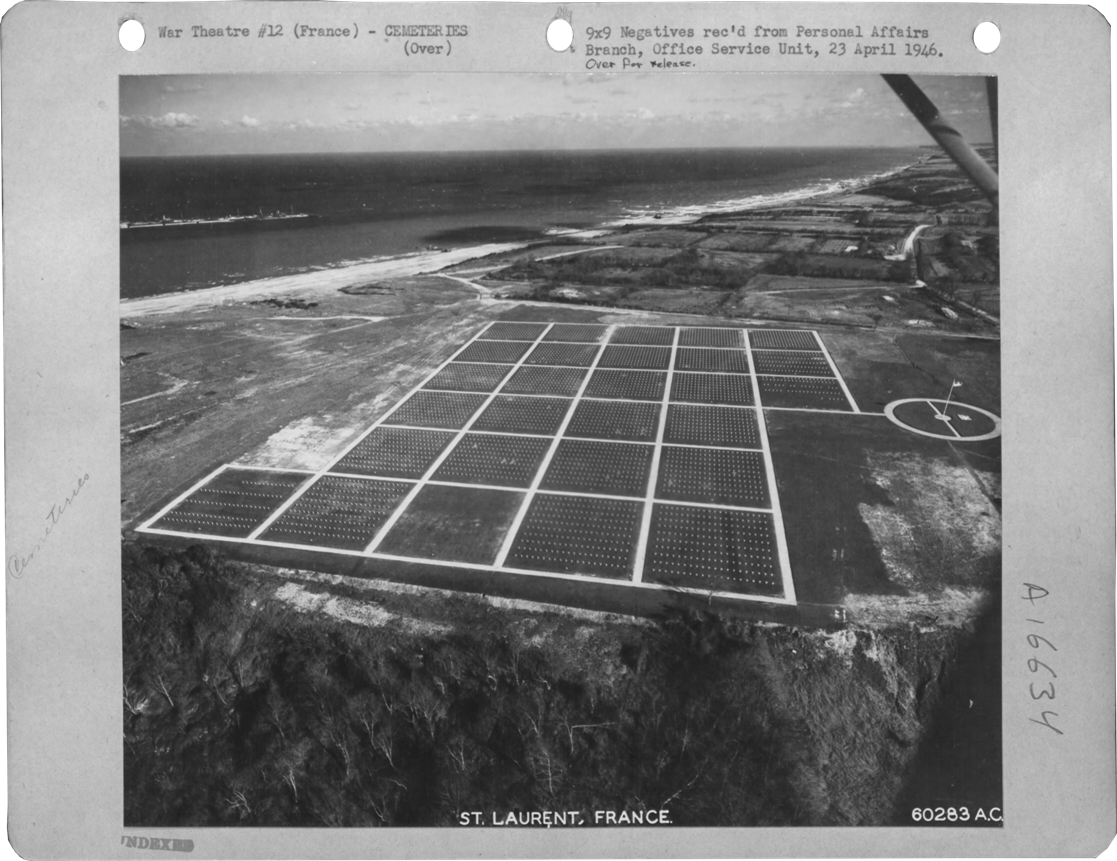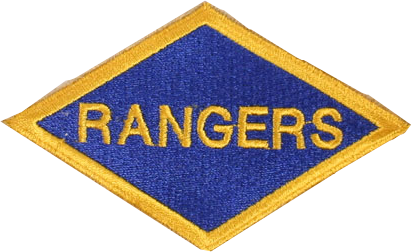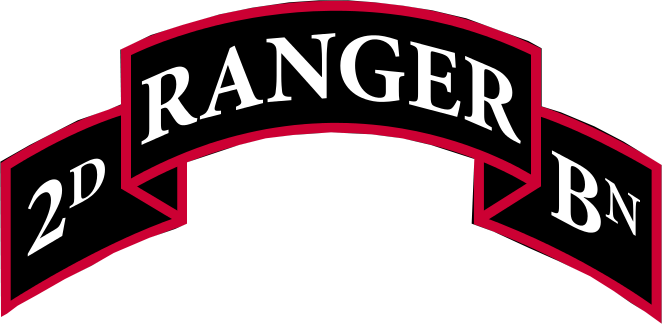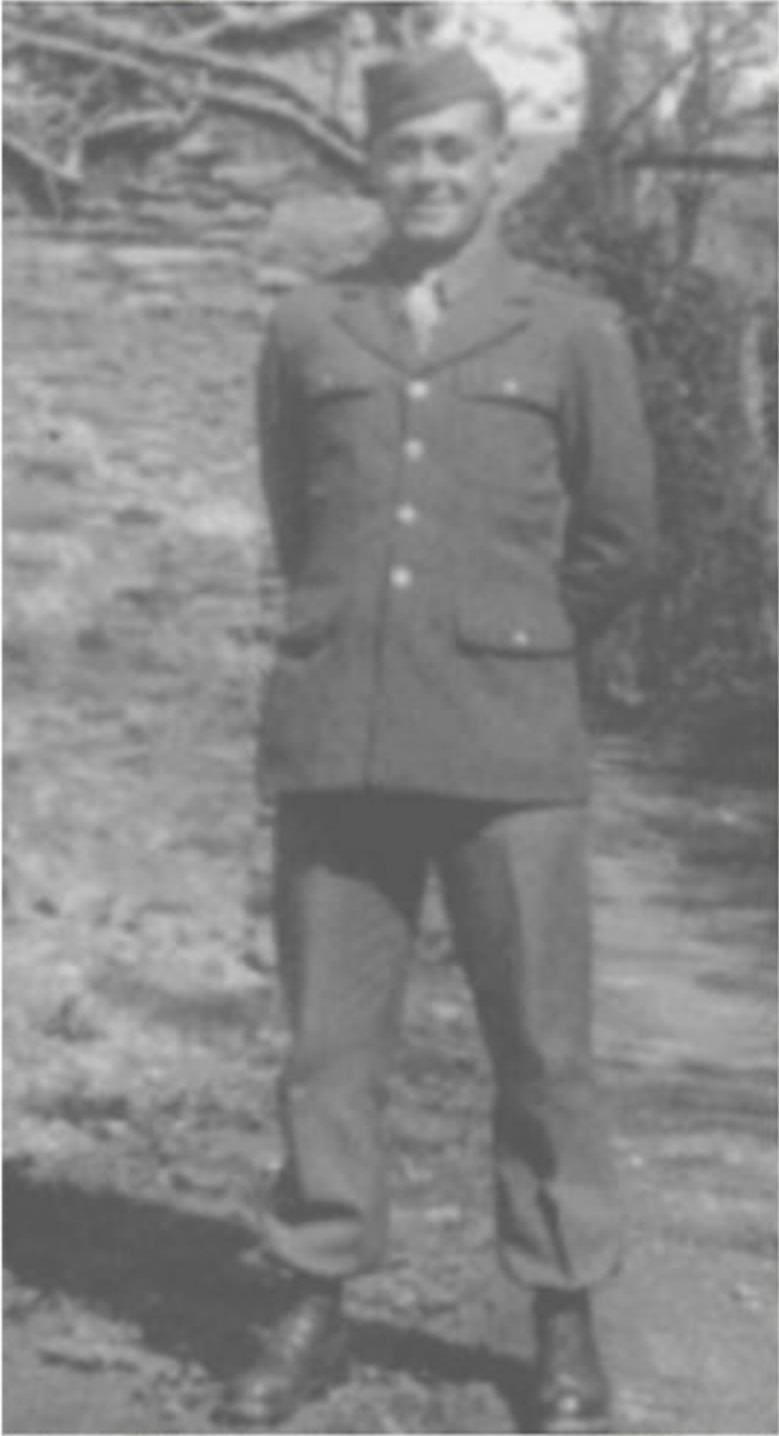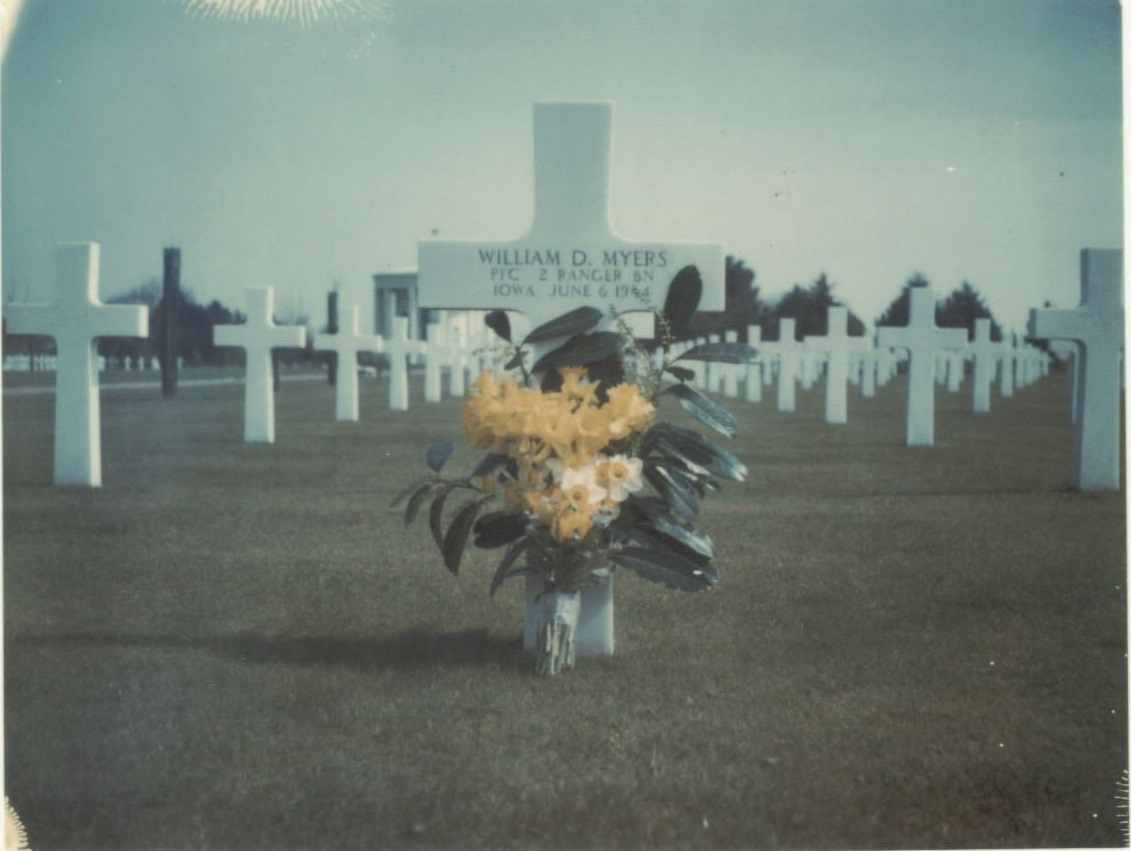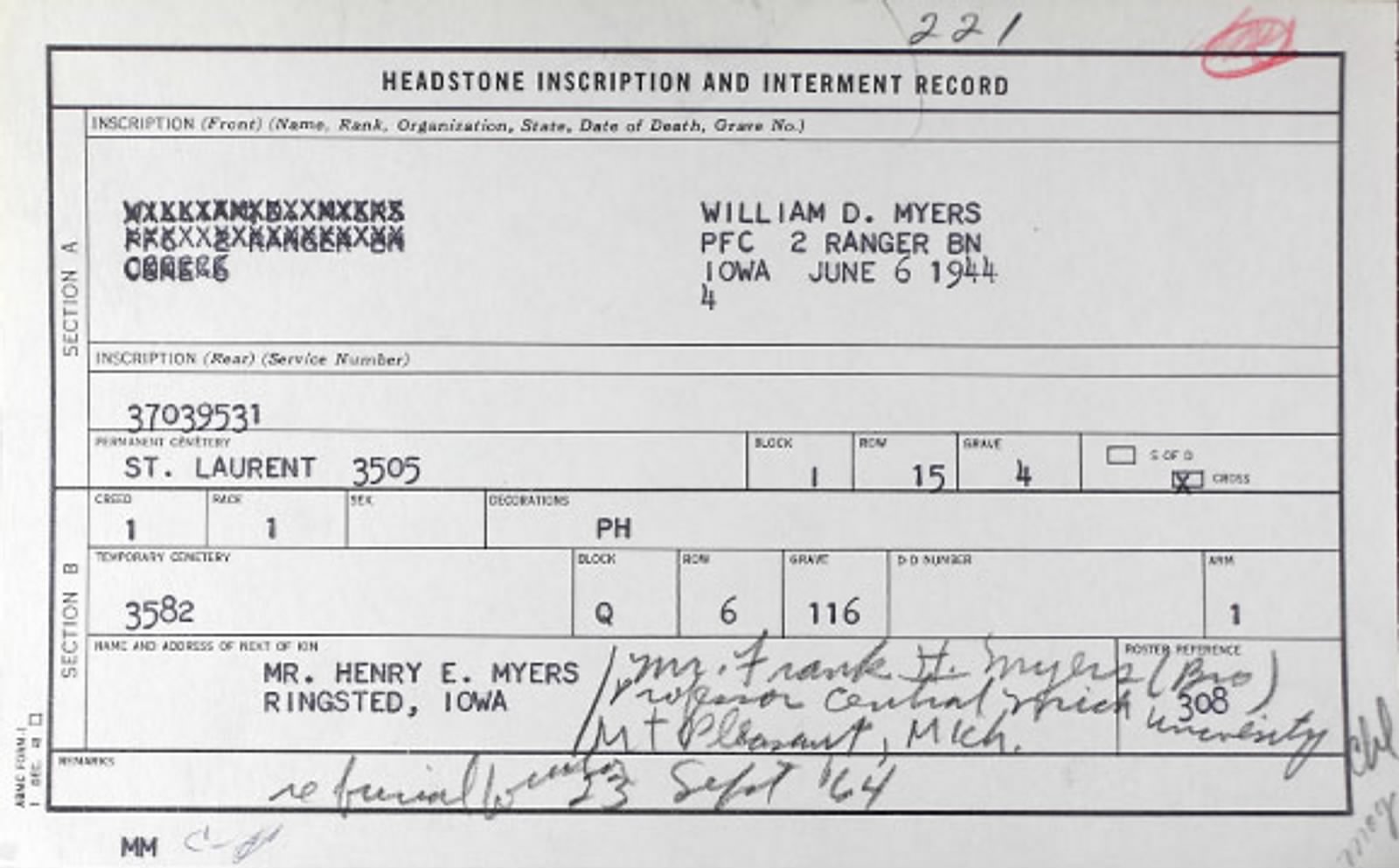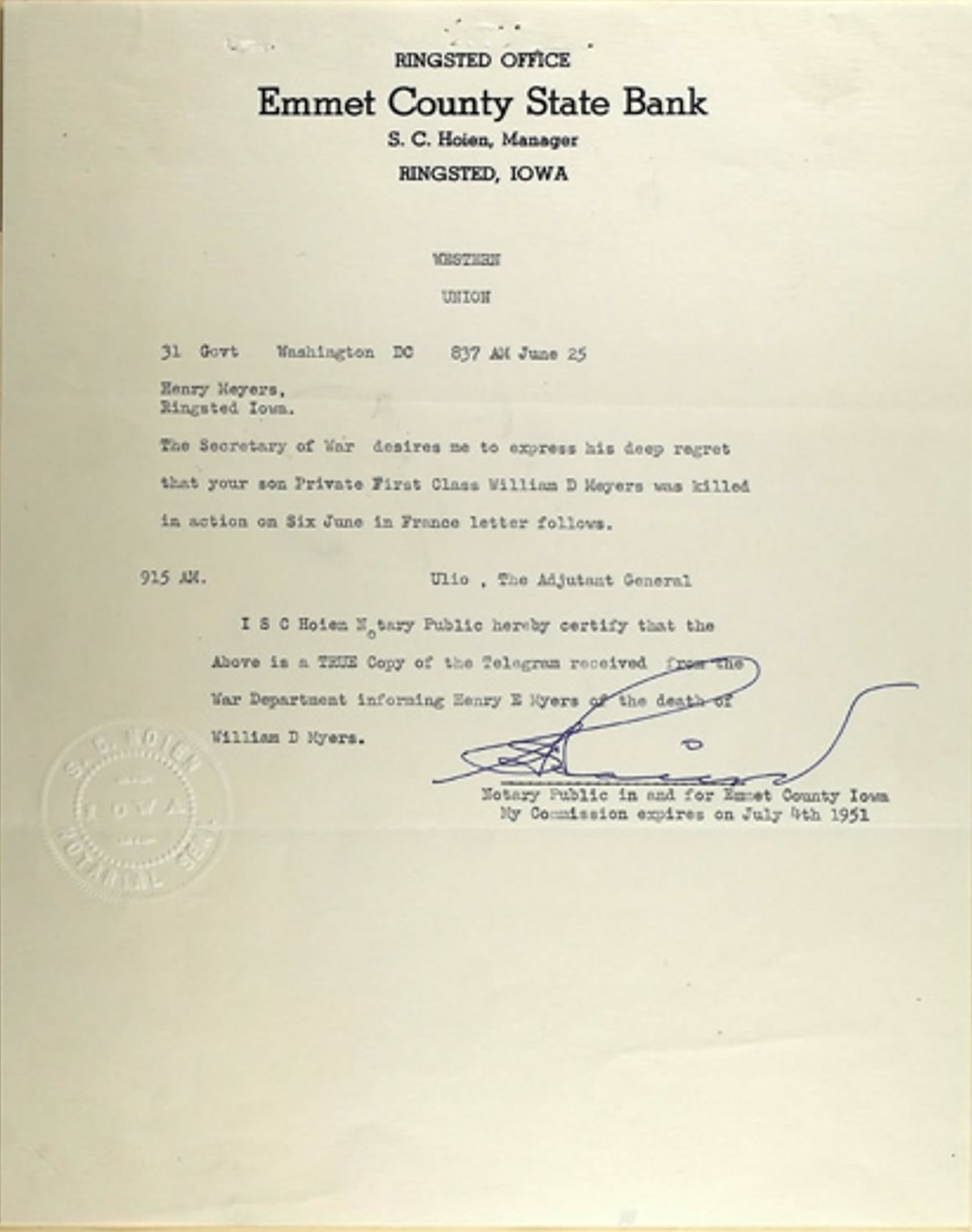|
William David MYERS
| |||||||
|---|---|---|---|---|---|---|---|
|
Source : Kalani203
| |||||||
| NUMBER OF SERVICE | 37039531 | ||||||
| AGE | 29 yo | ||||||
| DATE OF BIRTH | 6 May 1915 Ringsted, Emmet County, IOWA | ||||||
| ENLISTMENT STATE | IOWA | ||||||
| FAMILY |
Parents : Henry Errol & Frances Emily Soper MYERS Siblings : Vernon Jay, William David, Lois Jane, Henry Errol & Frank Homer | ||||||
| RANK | Private First Class | ||||||
| FONCTION | Ranger | ||||||
| JOB BEFORE ENLISTEMENT |  | ||||||
| DATE of ENLISTEMENT | 4 February 1941 | ||||||
| COMPANY | Company | ||||||
| BATTALION | 2nd Ranger Battalion | ||||||
| DATE OF DEATH | 6 June 1944 |
Source : Frogman | |||||
| STATUS | KIA | ||||||
| PLACE OF DEATH | Omaha Beach | ||||||
| CEMETERY TEMPORARY |
CEMTERY TEMPORARY of St Laurent N°3582
| ||||||
| CEMETERY | NORMANDY AMERICAN CEMETERY of Colleville | ||||||
| GRAVE |
| ||||||
| DECORATION |
| ||||||
| |||||||
| STORY | |||||||
|
Source : Kalani203
|
William (“Bill”) David Myers was the son of Henry E. (1884 - 1951) and Frances Emily (1892-1975) Myers. His parents were born in Joliet, Illinois and relocated to Ringsted, Iowa as farmers. Henry later became a building contractor for 35 years. The Myers remained in Ringsted to raise their family of 7 children. Pfc Bill Myers was born on May 6, 1915. He had 1 older brother, and 2 younger brothers who also enlisted in the Army. He also had 2 younger sisters. They all attended school in the 1-mile town of Ringsted which is near the center of Denmark Township, a 35.5 mile rural area in Emmet County, Iowa. The town was named after a Danish group who settled there in 1883. The population of Ringsted during the 1930 and1940 Census' was about 500. On October 16, 1940 Bill registered for the draft in Ringsted while employed at Thompson Yard. He enlisted on February 4, 1941 and according to a history written by his nephew (also named Bill Meyer), became a Staff Sergeant in the MP. However after WWII began, he volunteered to be an Army Ranger despite having to accept a demotion to a Private. He was assigned to the 2nd Ranger Battalion, Company C (“Charlie Company”). With German forces continuing to expand in Western and Central Europe, the U.S. joined Allied forces in the effort to liberate France. The 2nd Ranger Battalion was activated on April 1, 1943 at Camp Forrest, Tullahoma, Tennessee. In preparation for the D-Day invasion of Normandy, they received extensive training in weaponry, hand-to-hand combat, and infantry tactics. In September 1943, they were sent to Fort Pierce, Florida for amphibious training at the U.S. Navy Scouts and Raiders School. Training continued at Camp Richey for German weapons and language training. In early December 1943 the Battalion was sent to Grenache, Scotland for additional training in warfare techniques, followed by steep cliff training in Bude, England. | ||||||
|
Circa 1950 Source : Bill Myers |
Source : Kalani203
| ||||||
|
Source : Kalani203
|
The 2nd Ranger Battalion sailed from England to Normandy aboard the British ship Prince Charles. They were divided into 3 groups – Forces A (Companies D, E,F),** B** (Company C) and C (Companies A, B). Company C’s mission in the Normandy campaign (AKA Operation Overlord) was to land to the far right of Omaha Beach and scale the cliffs of Pointe de la Percée to overtake German defenses on the cliff top. They were to then rejoin Forces A and C at Pointe du Hoc. On June 6, 1944 at 0645 hours, Company C boarded LCAs (Landing Craft Attack) boats. In rough waves and strong currents the 68 Rangers were tossed about to such a degree that most aboard became seasick. The choppy seas made navigation difficult, causing them to approach the beach off-course, away from their intended landing point. The LCA’s were immediately met with German gunfire (mortars and small guns) from the cliff tops before reaching the shore. The German defenses were relentless, firing from concrete structures and pillboxes with heavy artillery (88 mm) guns, capable of a 12-mile range in all directions. Many Rangers were KIA or wounded prior to stepping foot on the beach. More casualties occurred as the remaining Rangers exited the boats into the water carrying heavy equipment and weapons as they made their way (some crawling despite their wounds) across the 300 yards of exposed beach to seek cover at the seawall and bottom of the cliffs. At this point, of the original 68 Rangers, Company C was reduced to 30. Nonetheless, the Rangers began their ascent of the 100-foot cliff using ropes to pursue their mission. They managed to help destroy the German defenses on the cliff top, and by late afternoon they moved on to Pointe du Hoc. By evening, the remaining Company C Rangers numbered 12. That day (D-Day) over 60 percent of the entire 2nd Ranger Battalion were killed or wounded, the highest casualty rate of any unit. In all, more than 150,000 soldiers, 5,000 ships and approximately 1,200 aircraft participated in the invasion of Normandy during “Operation Overlord”. Tragically, Pfc. William D. Myers was among those KIA on June 6, 1944. According to his nephew Bill’s research, Ranger Myers was KIA shortly after leaving his landing craft at Pointe de la Percee. He is interred at the Normandy American Cemetery and Memorial, Colleville-sur-Mer, Department du Calvados, Basse-Normandy, France. He was 29 years old and never married. At the time of his death, he was the 7th soldier from Ringsted, Iowa to die at Normandy. On February 22, 1945, the 2nd Ranger Battalion received the Presidential Unit Citation “for outstanding performance of duty in action.” | ||||||
| SOURCE INFORMATION & SOURCE PHOTO | Findagrave.com - Abmc.gov - Fold3.com |
|---|---|
| PROGRAMMER | Henri, Garrett, Clive, Frédéric & Renaud |


